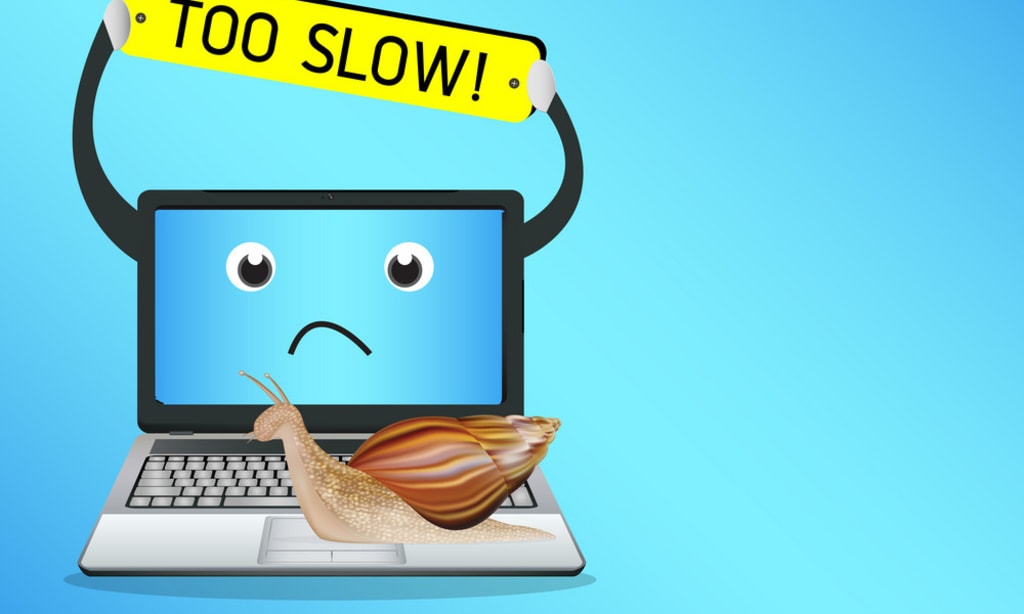How to Speed Up a Slow Laptop: Proven Tips and Tricks
Is your laptop running slow? Discover effective tips to speed up your laptop and improve its performance. Get professional help from Hire IT Expert's team of computer experts.

In today's fast-paced digital world, a slow laptop can be incredibly frustrating. Whether it's lagging during simple tasks or taking ages to boot up, a sluggish machine can severely hamper your productivity. This comprehensive guide will walk you through practical steps to speed up your laptop, ensuring it performs at its best. We'll cover everything from software tweaks to hardware upgrades and when to seek professional help from Hire IT Expert's team of computer experts.
Identifying the Symptoms of a Slow Laptop
Before diving into solutions, it's essential to understand the symptoms of a slow laptop. Here are common signs that indicate your laptop is running slow:
Slow Boot-Up Time: Taking several minutes to start.
Lagging Applications: Programs take a long time to open or respond.
Delayed Web Browsing: Web pages load slowly.
Unresponsive System: Frequent freezes or crashes.
Slow File Transfers: Moving files between folders takes longer than usual.
Recognizing these symptoms can help pinpoint the underlying causes and guide you to the appropriate solutions.
Declutter Your Software: Uninstall Unnecessary Programs
One of the primary reasons for a laptop running slow is the accumulation of unnecessary programs. These can consume valuable system resources and slow down your device. Here’s how to declutter your software:
Uninstall Unused Applications:
Windows: Go to Control Panel > Programs > Programs and Features. Select the programs you don't need and click Uninstall.
Mac: Open Finder, go to the Applications folder, and drag unnecessary apps to the Trash.
Disable Startup Programs:
Windows: Open Task Manager (Ctrl + Shift + Esc), go to the Startup tab, and disable unnecessary startup programs.
Mac: Go to System Preferences > Users & Groups > Login Items and remove unneeded startup items.
Use Disk Cleanup Tools:
Windows: Use Disk Cleanup to remove temporary files, system cache, and other junk files.
Mac: Utilize CleanMyMac or similar tools to clean up your system.
Optimize Startup Programs: Streamline Boot-Up Processes
Having too many programs launch at startup can significantly slow down your laptop. Streamlining your startup processes can lead to a faster boot-up time.
Windows:
Open Task Manager.
Navigate to the Startup tab.
Review and disable unnecessary startup programs.
Mac:
Open System Preferences.
Go to Users & Groups.
Select your user account and click on Login Items.
Remove items you don’t need at startup.
By minimizing the number of programs that run at startup, your laptop can boot up more quickly and efficiently.
Upgrade Your Hardware: Boost RAM and SSD
Sometimes, software tweaks aren’t enough to speed up your laptop. Upgrading your hardware can make a significant difference in performance.
Upgrade RAM:
Increasing your laptop’s RAM can enhance multitasking and overall speed.
Check your laptop’s specifications to determine the maximum RAM capacity and compatible types.
Install the new RAM by following the manufacturer’s instructions or seek professional help if needed.
Install an SSD:
Replacing your traditional hard drive with a Solid-State Drive (SSD) can drastically improve boot times and application load speeds.
Choose an SSD with sufficient capacity for your needs.
Clone your existing hard drive to the SSD or perform a fresh installation of your operating system.
Upgrading RAM and installing an SSD are among the most effective ways to speed up a slow laptop.
Clear Cache and Temporary Files: Purge the Digital Junk
Over time, your laptop accumulates a lot of temporary files, cache, and other digital junk that can slow down performance. Regularly clearing these can help maintain speed.
Windows:
Use Disk Cleanup to remove temporary files, system cache, and other unnecessary data.
Press Windows + R, type %temp%, and delete all files in the temporary folder.
Mac:
Clear the cache by going to Finder, selecting Go > Go to Folder, and typing ~/Library/Caches. Delete the files within.
Use tools like CleanMyMac for a more thorough cleanup.
Run Antivirus Scans: Combat Malware Intruders
Malware and viruses can severely impact your laptop’s performance. Running regular antivirus scans can help detect and remove malicious software.
Install Reliable Antivirus Software:
Choose reputable antivirus software such as Norton, McAfee, or Bitdefender.
Perform a full system scan to detect and remove any threats.
Enable Real-Time Protection:
Ensure your antivirus software offers real-time protection to prevent future infections.
Keep Your Antivirus Updated:
Regularly update your antivirus software to ensure it can detect and remove the latest threats.
Manage Background Processes: Ensure Optimal Performance
Background processes can consume a significant amount of your laptop’s resources. Managing these can help maintain optimal performance.
Windows:
Open Task Manager.
Go to the Processes tab and identify resource-intensive background processes.
End tasks that are unnecessary.
Mac:
Open Activity Monitor.
Review the CPU and Memory tabs to identify and quit resource-heavy processes.
Update Your Operating System: Keep Your Software Current
Keeping your operating system up to date ensures you have the latest performance improvements, security patches, and bug fixes.
Windows:
Go to Settings > Update & Security > Windows Update.
Check for updates and install them.
Mac:
Open System Preferences > Software Update.
Install any available updates.
Defragment Your Hard Drive: Optimize Data Storage
Fragmented data can slow down your laptop’s performance. Regularly defragmenting your hard drive can help.
Windows:
Open Defragment and Optimize Drives.
Select your hard drive and click Optimize.
Mac:
Macs automatically manage disk fragmentation, but you can use third-party tools if necessary.
Conclusion: Seek Professional Help When Needed
If you’ve tried all these tips and your laptop is still running slow, it might be time to seek professional help. Hire IT Expert offers comprehensive tech support through their team of Computer Experts. Whether it’s advanced troubleshooting, hardware upgrades, or system optimization, they can provide tailored solutions to meet your needs. Visit Hire IT Expert for more information and professional assistance.
By following these steps and seeking expert help when necessary, you can significantly improve your laptop’s performance and ensure it runs smoothly for years to come.
About the Creator
Enjoyed the story? Support the Creator.
Subscribe for free to receive all their stories in your feed. You could also pledge your support or give them a one-off tip, letting them know you appreciate their work.





Comments
There are no comments for this story
Be the first to respond and start the conversation.